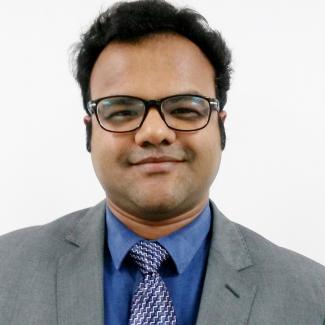
Says Dr Subhojit Dey, cancer researcher at the Indian Institute of Public Health. He tells us why, and how to protect yourself.
70% of Indian women with breast cancer seek medical help at the late stage. 5-year survival rate is around only 60%. In Developed Countries, for example in the USA 60-80% women reach the doctor at an early stage and 5 year survival is almost 90%. Awareness is key and saves lives.
Breast cancer incidence is increasing. What are the factors driving this increase?
Breast cancer is caused due to overexposure to the female hormone oestrogen. Anything that increases a woman's lifetime exposure to estrogen will increase breast cancer risk. Early menarche (first menstrual cycle) due to good nutrition in childhood, late marriage/age of having first child, fewer children, less breastfeeding, late menopause etc. can all contribute. Also, obesity - mainly postmenopausal. As is obvious, all of this is related to urbanicity, education, affluence, employment etc.
Also environmental chemicals called xenoestrogens (chemicals which behave like oestrogen in the body) are increasing with development - these chemicals are in plastics, pesticides, cosmetics etc. With time, more women are getting educated and joining the work force and xenoestrogen use is increasing. As such it is expected that risk factors and breast cancer will keep increasing.
Which section of society appears to be most at risk? Do education and employment make a difference?
The urban, more educated, affluent, employed women are most at risk. This is so because all of these factors appear as risk due to their underlying effects on a woman's reproductive profile.
In building awareness, what are the areas that need particular attention from government and community healthcare organisations?
Risk factors, symptoms, treatment and, most importantly, prevention. Also knowing the misconceptions and stigmas for breast cancer. All of these must be addressed for effective awareness creation.
We must also keep in mind:
-Community involvement (especially among the lower socio-economic status) is important for awareness creation supplemented by mass media, internet, apps etc.
- Doctors are not the best sources of information for awareness creation
- Men also must be made aware of breast cancer, not just women.
- A comprehensive breast cancer control policy must be in place or must be advocated for including awareness, early detection, diagnosis, treatment and palliative care.
Does greater awareness always translate into action – Breast Self Exam (BSE), clinical examination, mammogram etc?
Greater awareness is the first step towards better behaviour. We found in our earlier studies that women who were aware of BSE were 5 times more likely to present with early stage breast cancer. So greater awareness surely has the potential to translate into right prevention outlook and behaviour and thus save lives.
Talking of awareness, based on your study, what are some of the key misconceptions surrounding breast cancer?
Here are some key misconceptions (either most common or most alarming - including findings from unpublished data) in Indian women based on our study:
- Cancer is incurable (50%)
- Many women thought that surgery for breast cancer meant removal of entire breast, loss of femininity, losing money for nothing etc.
- Breast cancer is inherited (70%). Lots of misconceptions about risk factors of breast cancer - inherited, underwire bras, extra marital affairs
- Pain is the first symptom of breast cancer (75%) - most dangerous misconception
- Men believed that pressing the breast led to breast cancer (women reported hiding breast lumps since their husbands will say that they didn't press the breast so much so as to cause it, and will accuse them of infidelity)
Is there one misconception that is particularly dangerous and needs to be addressed straight away?
Pain is the first symptom of breast cancer.
In your opinion, what stops women from being proactive against breast cancer and taking the necessary steps? Is it just ignorance or something else?
I would coin the term positive and negative ignorance. Positive ignorance is lack of knowledge and can be improved by awareness creation. But negative ignorance is presence of misconceptions, wrong beliefs, stigmas which are harder to get rid of and stop the women the most. And these are most important to get rid of so that positive behaviour change can occur in women for early detection of breast cancer.
In some countries, the health ministry mandates frequency of screening and most annual checkups include Breast Self Exam (BSE) at least. Is that a way to go?
I think there is a consensus about how to go about early detection of breast cancer:
-BSE every month 5 days after periods after 20 years of age
-CBE (Clinical Breast Exam) every 1-3 years from 20-39
-Mammography (or USG/MRI) - every year after 40
The above plan can be modified based on age distribution of breast cancer and level of resources for a particular region. However, so far, this is the way to go for secondary prevention of breast cancer.
Dr Dey is one of the authors of the research paper ‘Breast Cancer Awareness at the Community Level among Women in Delhi, India’.
Dr. SubhojitDey,
MBBS, MD(AM), MPH, PhD
Associate Professor – Indian Institute of Public Health –Delhi (IIPHD)
Public Health Foundation of India (PHFI)






